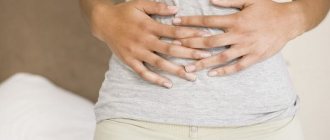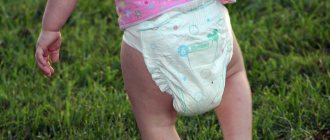Rotavirus in a child is an acute infectious disease in which symptoms of gastrointestinal distress, intoxication, fever predominate, and catarrhal symptoms are possible. The disease is also called intestinal flu.
Mostly children aged 6 months – 5 years are affected. The causative agent is an RNA-containing rotavirus, which is transmitted from sick people or asymptomatic carriers. In adults and older children, the disease occurs in a mild or latent form, is often regarded as food poisoning and goes away without treatment.
The younger the child and the weaker his immune system, the more often rotavirus in a child is accompanied by dehydration, repeated vomiting, and diarrhea. A pediatrician will help you identify the signs of rotavirus in children and understand how to treat it.
Causes of rotavirus infection in children
The cause of rotavirus infection in a child is the entry of a virus into the body. There are several ways of infection:
- Fecal-oral – with dirty hands. Traces of the virus can be on toys, any objects, or on the floor. Small children crawl on the floor, putting everything in their mouths.
- Food - with milk and dairy products, unboiled water, unwashed fruits.
- Contact when using shared utensils. If someone in the family has a bowel disorder, they need to allocate separate dishes, wash them under hot water, rinse with boiling water, and wash bed linen separately.
- You can also become infected with rotavirus disease by swimming in a pool, body of water, including the sea.
There are often outbreaks of rotavirus in children's groups - in kindergartens, nurseries, schools, hospitals, camps. People suffer from rotavirus enteritis mainly in the cold season, from spring to autumn. It takes 1–4 days from infection with the virus to the appearance of the clinic.
How to protect yourself from rotavirus
When treating stomach flu at home without following recommendations to protect others, the entire family usually becomes infected. To prevent this from happening, you must follow the following rules:
- provide the sick person with a separate plate, mug, spoon and other utensils;
- provide individual towels for face, hands and body, if none were available;
- wash all household items touched by the patient with soap or antiseptic, you can pour boiling water over them;
- things need to be washed often and, if necessary, soaked in disinfectants in order to avoid infection;
- when communicating with someone who is infectious, wear a gauze mask for complete protection;
- Every day you need to wash the toilet and floors with the addition of chlorine compounds.
If your immune system is weak, it is advisable to take mineral and vitamin complexes and specialized medications. Before medicinal prophylaxis of rotavirus, you should consult a doctor for advice.
How dangerous is rotavirus infection for children under 5 years of age?
In preschool children, the disease occurs with a significant increase in temperature. Rotavirus affects the cells of the intestines and stomach, destruction of villi occurs, and the function of parietal digestion and absorption in the small intestine is disrupted. Because of this, a large amount of water is secreted into the lumen of the gastrointestinal tract, nutrients are not absorbed, and electrolytes are lost.
Since rotavirus in children occurs with a high temperature, fluid loss increases through the upper respiratory tract due to rapid breathing. All this can lead to severe dehydration. Against this background, convulsions, disturbances in consciousness, heart function, and kidney function may occur.
Conditions that should alert adults and are a signal for urgent medical attention:
- Vomiting does not stop for more than 24 hours.
- The child cannot drink enough water and signs of dehydration increase - dry skin, retraction of the fontanel in infants, eyeballs, weakness, lethargy, convulsions, confusion, dry tongue, crying without tears, lack of urine for 6 hours (normal should be every 3 hours), the urine is dark and has a strong odor.
- New symptoms appeared - a rash, pathological impurities in the stool, for example, blood, pus, mucus, and the temperature rose for the second time.
Intestinal infections: how to prevent?
Every day, billions of different bacteria enter our body, because of which, it would seem, our health should deteriorate, we should get sick more often, but no: nature has come up with a huge number of ways to neutralize microbes. Among them are saliva, which has bactericidal properties, gastric juice, and “good” bacteria in the intestines - all this constitutes the protection of our body. .
However, there will always be microbes and viruses that will bypass all protective barriers, and there is no person who has never encountered an intestinal infection.
The main reason for such infections is very simple (everyone has been told about it since childhood, but often we do not pay attention to all the assurances of adults): failure to comply with basic hygiene standards. After all, there is nothing difficult about washing your hands after going outside and before eating, storing food properly, and washing vegetables thoroughly. It’s really not complicated, but our laziness often takes precedence over reason, and then, having already fallen ill, we usually regret that we did not follow the simplest precautions.
What are intestinal infections?
The peak in the prevalence of intestinal infections, especially among children, is considered to be the end of summer and autumn. A child begins to attend school or kindergarten, and accordingly, partially falls out of parental control, comes into close contact with peers who may be carriers of one or another infection, and, as a result, the risk of contracting intestinal infections increases. Didn’t wash your hands, ate something from the ground (this still applies more to children in kindergarten), and even drank water from the tap - this is not a complete list of where an intestinal infection can start in the body.
The type of intestinal infection depends on its causative agent. They can be bacteria - dysentery bacillus, salmonella, staphylococcus, typhoid bacillus, vibrio cholera and some viruses. Some bacteria live in water, others live in various food products, and not just any, but very specific ones. For example, in the case of salmonella, these are eggs; in other cases, the source of infection may be dairy products, meat or unwashed vegetables.
According to international studies[ii], from 50 to 80% of cases of acute intestinal infections in children are caused by diarrheagenic viruses. These primarily include group A rotaviruses and genotype 2 noroviruses. In Russia, the frequency of rotavirus gastroenteritis in the structure of the incidence of acute intestinal infections is 7–35%, and among children under 3 years of age it exceeds 60%.
Despite the prevalence of diarrheagenic viruses, the problem of acute intestinal infections of bacterial etiology does not lose its relevance. The most common bacterial causative agent of acute intestinal infections in children is salmonella; incidence rates are at a fairly high level (30–35 per 100 thousand population), and their share in the structure of acute intestinal infections is about 7%.
Along with salmonellosis, escherichiosis remains relevant in the structure of acute infections of bacterial etiology. Yersiniosis and shigellosis are now relatively rare, occurring in only 0.9 and 0.3% of cases, respectively.
Intestinal infection: symptoms
Intestinal infection (or acute gastroenteritis) is especially common among children, who are known to not place much importance on hygiene. The main cause of acute gastroenteritis in 80% of cases are rotaviruses, as well as adeno- and enteroviruses[iii]. The virus, entering the child’s body, affects the cells of the intestinal mucosa - enterocytes, which are responsible for parietal digestion and absorption, resulting in the development of the main symptom of the disease - diarrhea. In addition, the intestinal microflora and the functioning of the entire gastrointestinal tract as a whole are disrupted. Therefore, a sick child may experience vomiting, abdominal pain and flatulence[iv]. These clinical manifestations appear suddenly against the background of high temperature. In severe cases of gastroenteritis, serious complications may develop due to dehydration and intoxication, requiring emergency measures and even hospitalization of the child.
Pathological changes in the composition of the microflora caused by rotavirus aggravate the negative impact on the course and outcome of the disease - the amount of beneficial microflora decreases, the severity of inflammatory processes in the intestinal mucosa increases, and intoxication increases due to the release of toxins from the intestinal microflora's own pathogenic microflora[v][vi].
So what to do if you have already encountered an intestinal infection? How to restore normal intestinal microflora? What are probiotics and what effect do they have on the body?
Lactobacilli LGG as a salvation from infection
The term “probiotics” is currently used primarily to refer to pharmacological preparations or biologically active additives (BAA) containing strains of one or more representatives of the normal human microflora and having a positive effect on the human body. The most studied probiotic, widely used in food and pharmaceutical formulations, is L. rhamnosus GG (ATCC 53103), or LGG[vii] .
The L. rhamnosus strain was patented in 1985 by S. Gorbach and B. Goldin (the abbreviation “GG” in the name of the strain was taken from the first letters of their surnames). Gorbach and Goldin note in their patent that this strain is resistant to the effects of hydrochloric acid of gastric juice and bile, therefore, after ingestion, L. rhamnosus GG remains viable when passing through the gastrointestinal tract, has a high ability of adhesion to the epithelium of the intestinal mucosa and produces lactic acid[ viii]. Thus, lactobacilli LGG are a real salvation for the intestinal microflora and for the body as a whole.
What is the effectiveness of LGG?
- LGG, like many probiotics, produces antimicrobial factors that inhibit the activity of a number of pathogenic intestinal microorganisms, including Clostridium spp., Pseudomonas spp., Salmonella spp., Escherichia coli, Staphylococcus and Streptococcus spp. [ix]
- LGGs significantly enhance the intestinal barrier function, which counteracts the colonization of the body by potentially pathogenic microorganisms.
- The only strain that accelerates recovery from infectious diarrhea: it reduces the duration of diarrhea by 3 days, shortens the length of hospitalization, and alleviates the course of rotavirus infection. As evidence, we cite as an example the results of a multicenter study involving 876 children and carried out by the ESPGHAN “diarrhea scientific working group”. The scientific team concluded that LGG is currently the only probiotic strain that can reduce the risk of developing diarrhea and the duration of illness beyond 3 days. Moreover, the greatest effect can be achieved if you start taking a probiotic after the first symptoms appear[x].
- Restores the body's immune defense[xi].
- Reduces the frequency and severity of allergic reactions of the body[xii].
- Promotes the growth of bifidobacteria - its own flora, which, as a result, reduces the risk of recurrent intestinal infection[xiii].
- It has a pronounced anti-inflammatory effect[xiv].
Thus, LGG is an effective and safe probiotic that strengthens the immune system and normalizes intestinal microflora. The Lactobacillus rhamnosus GG strain is officially recommended for the treatment of intestinal infections in children and is included in the guideline “Management of acute gastroenteritis in children”, which is published by the European Society of Pediatric Gastroenterologists, Hepatologists, and Nutritionists (ESPGAN) together with the European Society of Pediatric Infectious Diseases (ESPID)[xv ].
Sources of Lactobacillus LGG
Fermented milk products containing LGG lactobacilli are certainly beneficial for the intestinal microflora, but cannot quickly and fully restore it if infection has already occurred. That is why the advisability of prescribing probiotics in the treatment of intestinal infections (in children in particular) is beyond doubt among most specialists - it is pathogenetically substantiated, safe, and in accordance with the principles of evidence-based medicine, it belongs to the highest level of evidence - A.
In Russia, today the LGG strain of high concentration (4x109 CFU) contains only Normobact L.[xvi]
Normobact L is more than just a probiotic: it not only restores the intestinal microflora, but also strengthens the immune system. The child gets sick less often and recovers faster from viruses, infections and allergies [xvii].
Recommended regimen for taking Normobact L: children from 1 month to 3 years old - 1 sachet per day with meals for 10-14 days. Children over 3 years old - 1-2 sachets or more per day with meals for a course of 10-14 days.
________________________
As an advertisement
Komarovsky E.O. The health of the child and the common sense of his relatives. — 2nd ed., revised. and additional - Kharkov: KLINIKOM Publishing House, 2012. - 592 p., ill. - (B-doctor Komarovsky).
[ii] Usenko D.V., Ploskireva A.A., Gorelov A.V. ACUTE INTESTINAL INFECTIONS IN CHILDREN IN PEDIATRIC PRACTICE: DIAGNOSIS AND THERAPY POSSIBILITIES. Issues of modern pediatrics. 2014;13(3):12-20.
[iii] Vorotyntseva N.V., Mazankova L.N. Acute intestinal infections in children. M., 2001. 480 p.;
[iv] Mazankova L.N., Gorbunov S.G., Sugyan N.G., Shaposhnikova L.I. Rotavirus infection in children: features of the course and therapy. Methodological recommendations for doctors. M., 2012. 32 p.
[v] Zhelezova L.I. Clinical and laboratory features of microecological disorders of the colon mucosa during acute intestinal infections in children. Abstract of thesis. Ph.D. honey. Sci. St. Petersburg, 2006
[vi] Kramar L.V., Rodionova N.V., Arova A.A. Microecological features of the intestinal biocenosis of children of the first year of life with acute intestinal infections. Basic research. 2014;2:90-3.
[vii] Belmer S.V. Lactic acid bacteria in food: theoretical foundations and practical significance (using the example of Lactobacillus rhamnosus GG) // Issue of modern pediatrics. – 2011. – Volume 10. – No. 3.
[viii] Andreeva I.V. Modern evidence of the effectiveness of the use of Lactobacillus rhamnosus GG and Bifidobacterium lactis Bb-12 in pediatric practice // Issues of modern pediatrics. – 2011. – Volume 10. – No. 1.
[ix],9, 12, 16 Surzhik A.V. The influence of the probiotic culture Lactobacillus rhamnosus GG on the body's immune response. Issues of modern pediatrics. 2009; 8; 2: 54-58.
>[xi], 13 E.A. Kornienko, L.N. Mazankova, A.V. Gorelov, E.V. Shikh, L.S. Namazova-Baranova, I.A. Belyaeva. The use of probiotics in pediatrics: analysis of therapeutic and preventive effects from the perspective of evidence-based medicine. The attending physician. 2015; 9.
[xii] Makarova S.G., Borovik T.E. Intestinal dysbiosis in children with food allergies: pathogenetic aspects and modern methods of correction. ISSUES IN MODERN PEDIATRICS. 2008; 7; 2: 82-92.
[xv] Guarino A., Lo Vecchio A., Zakharova I.N., Sugyan N.G., Israilbekova I.B. Tactics for the management of children with acute gastroenteritis at the prehospital stage: implementation of international recommendations in pediatric practice, Breast Cancer Pediatrics, Mother and Child, No. 21, 2014, pp. 1483-1488.
[xvi] Comparison of the presence and concentration of the Lactobacillus rhamnosus GG strain (in Normobakt L, insert leaflet, certificate of state registration of Normobakt L SGR No. KZ.16.01.78.003.E.002243.08.13 dated 08/06/2013) among other probiotic dietary supplements according to list (leaflets): Linex for Children, Bifiform Baby, Bifiform-Baby, Maxilak, Maxilak Baby, Liveo, Baktistatin, Normospectrum, Bak-Set)
published 21/10/2016 09:20 updated 31/10/2016
Symptoms
Symptoms of rotavirus in children are similar to other intestinal infections:
- vomiting – the more severe the disease, the more often it recurs;
- diarrhea from 3 to 20 times a day, loose, profuse stools, there may be foam and mucus, color from yellow to green, with an unpleasant odor;
- smell of acetone from the mouth;
- abdominal pain is localized in the upper part and around the navel;
- rumbling and transfusion in the abdomen over the area of the small intestine;
- fever – temperature rises to 38–39 degrees;
- disturbance of general condition - lethargy, lack of appetite, pallor, headache, dizziness.
In addition, rotaviruses cause cold-like symptoms:
- sore throat, sore throat, upon examination redness of the back of the throat;
- nasal discharge, congestion;
- there may be a dry cough;
- enlarged lymph nodes under the lower jaw;
- redness of the conjunctiva of the eyes.
Catarrhal phenomena appear at the onset of the disease and quickly give way to gastrointestinal disorders. Rarely, the virus affects other organs - the pancreas, and chronic gastrointestinal diseases worsen.
Depending on the severity of symptoms, there are three degrees of severity of the disease:
- light;
- average;
- severe form.
If you can cope with a mild form on your own, then with more serious lesions you should consult a doctor. Then there is less risk of complications and protracted course of the disease. Prolonged diarrhea and vomiting can lead to the following disorders:
- electrolyte imbalance, conduction disturbances in the heart muscle, convulsions;
- damage to the digestive system - pancreas, liver, gallbladder;
- cardiovascular disorders, acute renal failure, central nervous system lesions.
Reducing the temperature during rotavirus
Rotavirus infection is almost always accompanied by an increase in core body temperature, on average up to 38 degrees. If the child tolerates this symptom satisfactorily, there is no need to resort to antipyretics. When the temperature rises to 39 degrees, doctors recommend Cefekon suppositories, suitable for children under 3 years of age. For older patients, Paracetamol is allowed, dosing according to the instructions. In some cases, when the temperature cannot be brought down to an acceptable level, it is possible to use Paracetamol with Analgin (a quarter of a tablet).
In addition to drug treatment, wet wipes with vodka or vinegar solution are added. The solutions must be applied to the child’s entire body, avoiding temperature changes between areas of the skin.
The drug Enterofuril has a good therapeutic effect. The product actively fights gastrointestinal dysfunction and stabilizes body temperature. If necessary, you can replace it with Enterol.
When a rotavirus infection is accompanied by pain in the gastrointestinal tract, the child is given 1 ml of No-shpa solution, first diluted with a teaspoon of water or tea.
Rotavirus infection is accompanied by a violation of the intestinal microflora. After the main treatment, you will need a course of drugs that eliminate dysbiosis. The following drugs are allowed for the treatment of childhood dysbiosis: Hilak forte, Linex, Normobact (allowed for infants).
First aid, or what can parents do before the doctor arrives?
Even without knowing the cause of an intestinal infection, the exact source of infection, you can help a sick child. The main thing is to prevent dehydration. If parents see symptoms of gastroenteritis or intoxication, they need to give the child something to drink. The principle is little and often.
With diarrhea, not only water is lost, but also sodium, potassium, magnesium, and glucose ions. Saline solution helps replenish electrolyte balance.
You should not feed your child or give him medications on your own:
- antibiotics (they do not help with viral infections);
- antidiarrheals, for example, Imodium (they stop diarrhea, but virus particles remain in the intestines longer and cause more harm);
- antiviral drugs – there are no drugs with proven effectiveness against rotaviruses.
If there is severe vomiting, the child should be placed on his side so that the vomit does not enter the respiratory tract. It is advisable to warm him up and calm him down. If the child asks to eat, you can give food in small quantities and in pureed form - vegetable soup, mashed potatoes, porridge. You should avoid pasta, bread products, fatty meats, cottage cheese, milk, sweets, fresh vegetables and fruits, and potatoes. You can drink compote, jelly, unsweetened tea, still water.
Diagnostics
When making a diagnosis, take into account:
- Clinical picture: the infection begins 12 hours to several days after contact with the patient. The main symptoms are acute gastroenteritis (inflammation of the stomach and small intestine), fever, intoxication, and dehydration in severe forms.
- Epidemiological data - infection with rotavirus occurs in several people from the same team. When washing off surfaces, examining food debris, and feces, virus particles are detected using the PCR method.
- Laboratory data - blood test, urine test, stool microscopy. Stool culture and microbiological examination help to exclude other gastrointestinal infections - cholera, salmonellosis, dysentery, escherichiosis, enterovirus infection. From the fifth day of illness, specific antibodies to rotavirus are detected in the blood.
After examining the child, the doctor will be able to rule out acute poisoning, exacerbation of chronic pathology of the liver, stomach, pancreas, intestines, and other bacterial and viral infections.
What to do if you have been in contact with a sick person
The incubation period of the disease varies from 3–4 hours to seven days. At the same time, the person does not know that he is already infected and, perhaps, will feel worse in the near future. Due to the lack of symptoms and reluctance to go to the doctor, a diagnosis is not made. The patient comes into contact with everyone as usual and spreads the rotavirus further. Often, worries arise only at the moment when one of the family members suddenly begins to talk about severe nausea, chills and other signs of illness.
If a person is afraid of contracting inflammation of the gastrointestinal tract, it is recommended to take antiviral drugs. When rotavirus is most active:
- Arbidol,
- Anaferon,
- Viferon,
- Isoprinosine.
The concept of preventing intestinal flu may include vaccination, however, antibodies are not produced immediately, so it does not apply to methods of immediate protection after contact with an infected person.
Treatment
In the treatment of rotavirus infection in children, the main directions are:
- Prevention and elimination of dehydration. In case of severe symptoms, solutions are administered intravenously; in case of satisfactory condition, it is enough to simply drink.
- Detoxification measures.
- Symptomatic drugs - antiemetics, adsorbents, antipyretics, antispasmodics.
Specific antiviral treatment for rotavirus infection is not required. Sometimes the doctor may additionally prescribe:
- enzyme preparations to improve food digestion.
- probiotics, prebiotics to maintain your own beneficial intestinal microflora.
Precautions in healthcare settings
In infectious diseases departments of hospitals, where they deal with the elimination of diseases caused by pathogenic microorganisms, there are rules for the prevention of rotavirus infection. They are aimed at reducing the risk of recurrent illness, so it is almost impossible to become infected with intestinal flu. The list of events includes:
- placement of patients in separate boxes, where they remain with an identical disease;
- restriction of movement around the hospital;
- quartzing, cleaning premises with disinfectants.
If the rules described above are ignored, the risk of further spread of rotavirus and infection of a larger number of the population sharply increases.
The course of rotavirus infection, how many days does rotavirus last
Most often, the course of the disease is favorable; recovery occurs after about 5–7 days. However, the shedding of virus particles in feces may take longer. This must be taken into account so that other children do not get sick. Vomiting stops within 1–2 days, diarrhea a little later, after 3–5 days. The severity of rotavirus gastroenteritis is influenced by many factors:
- child's age;
- his immunity;
- state of the digestive system, presence of concomitant diseases;
- the first time the organism encounters the virus or repeatedly;
- virulence, infectivity of the pathogen, its serovar.
How long is a person contagious?
The carrier or patient is capable of spreading rotavirus intestinal infection throughout the entire time the microorganism is in the tissues and is excreted through feces and saliva.
After the rotavirus clinic subsides and the person stops complaining about deterioration in health, it is still necessary to follow preventive measures, as there is a risk of becoming infected. Therefore, you should not come into close contact with people who have recently been ill; you should continue to treat all surfaces and household items with disinfectant solutions.
Prognosis and prevention
The disease is dangerous if severe dehydration is allowed to develop. To protect young children from rotavirus gastroenteritis, specific prevention of rotavirus infection has been developed. This is a vaccine in the form of drops. The medicine is dripped into the child’s mouth and the procedure is repeated three times at intervals of a month. You can start vaccinating infants at 1.5 months, before that they have maternal antibodies against rotavirus in their blood.
Nonspecific prevention also plays a significant role:
- You need to wash your hands after transport, walking, using the toilet, and before eating.
- Boil water.
- If a carrier or sick person who can become a source of spread of infection is identified in the team, he must be isolated until he recovers.
- Proper nutrition of the mother and breastfeeding strengthens the child’s immune strength. It’s no wonder that formula-fed children are more likely to get rotavirus disease.
- In a family, a sick person should have separate dishes, a towel, and a bed. Cleaning should be done with the addition of disinfectants, and things should be washed at high temperatures.
If a nursing mother gets sick
There are many misconceptions about treatment for women who are breastfeeding and contract rotavirus. Here are some recommendations from therapists and pediatricians:
- You cannot self-medicate; to make an accurate diagnosis, it is important to seek help from a doctor;
- rotavirus does not penetrate into breast milk, so switching to formula is not at all necessary to prevent the baby from becoming infected;
- feeding can and should be continued, but at the same time observe all hygiene rules (washing hands and chest, putting on a gauze mask, and so on);
- if there is a sharp deterioration in health, it is better to express milk and give it to the baby in a bottle;
- the use of mixtures is necessary if a secondary bacterial infection has occurred and antibiotics are required.
Natural feeding provides additional protection for the baby from viral inflammation, so the likelihood of becoming infected with rotavirus is significantly reduced. Switching to formula usually leads to the end of lactation, which does not have the best effect on the baby’s body.
Question answer
What to feed a child with rotavirus?
You need to feed if the child wants to eat. Otherwise, you can skip the meal (pause for 6 to 24 hours). Breastfeeding is not restricted. If milk is not digestible, you can temporarily replace it with lactose-free formulas. The main thing is to maintain a drinking regime. You can give water, unsweetened tea (sugar will worsen diarrhea), jelly, chamomile infusions. You can feed him food that is easy to digest. These are dishes that are steamed, oven-baked, boiled or stewed. Do not give spicy, fatty, fried foods, raw fruits and vegetables, milk, baked goods. It is recommended to reduce the portion size and increase the frequency of meals.
At what age should a child be vaccinated against rotavirus?
The vaccine is given at the age of 1.5 to 8 months. Full vaccination consists of three doses spaced 4 weeks apart (usually 2, 3 and 4.5 months). The RotaTek vaccine is oral (dropped into the mouth), contains live, weakened viruses, and is usually well tolerated.
Young children are more susceptible to rotavirus infection. The prognosis is especially serious for newborns, weakened children, those born prematurely, those who have suffered a birth injury, and those with signs of malnutrition. After immunity against the virus is formed, there is also a risk of getting sick, but the disease occurs in a milder form.









